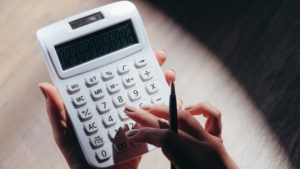A rental property is a popular investment amongst Australians, but some may be unaware of what return their investment is providing them. Calculating the total profit or loss after tax can provide insight to the actual monetary return.
Rental profit (income is greater than expenses) is treated as ordinary assessable income and is taxed at your marginal tax rate, whereas a rental loss (expenses are greater than income) will reduce your overall taxable income and tax payable (depending on your marginal tax rate).
An example is provided below which shows the total rent profit or loss after tax for a property that has a loan with deductible interest and one without. Calculating the profit or loss after tax can be broken down into 3 steps, which are set out below:
- Calculate net rental profit or loss
The net rental profit or loss is calculated as rental income received less rental expenses incurred. Some additional expenses which you may not know can be included are interest on loans used to fund the purchase of the investment property and a deduction for the construction cost of the building (depreciation). For the purposes of this example, depreciation has not been included.
- Calculate the tax payable or refundable
Calculating the tax payable or refundable is calculated as your marginal tax rate multiplied by the net rental profit or loss. The marginal tax rate will depend on your individual taxable income for that particular year. You may need check the current ATO tax brackets to determine which tax rate applies to you or speak to your accountant to confirm. For this example, a marginal tax rate of 32.5% has been assumed (taxable income between $45k and $120k). In most circumstances an additional 2% Medicare levy will also be applicable, making the effective tax rate in this example 34.5%.
- Subtract any tax from the net rent
The final step is to subtract the tax payable or refundable from the net rental profit or loss. See the table below for a practical example.
| Financed | Not Financed | ||||
| 1 | INCOME | INCOME | |||
| Rent | $ 20,000 | Rent | $ 20,000 | ||
| EXPENSES | EXPENSES | ||||
| Advertising | $ 350 | Advertising | $ 350 | ||
| Council Rates | $ 2,200 | Council Rates | $ 2,200 | ||
| Insurance | $ 950 | Insurance | $ 950 | ||
| Interest on Loan | $ 13,500 | Interest on Loan | $ 0 | ||
| Land Tax | $ 650 | Land Tax | $ 650 | ||
| Management fees | $ 2,700 | Management fees | $ 2,700 | ||
| Repairs and Maintenance | $ 1,300 | Repairs and Maintenance | $ 1,300 | ||
| Water Rates | $ 1,250 | Water Rates | $ 1,250 | ||
| Water Use | $ 460 | Water Use | $ 460 | ||
| Total Expenses | $ 23,360 | Total Expenses | $ 9,860 | ||
| NET RENT | $ ( 3,360) | NET RENT | $ 10,140 | ||
| 2 | Tax at 34.5% | $ 1,159 | $ 3,498 | ||
| Net Rental Profit or Loss | $ (3,360) | $ 10,140 | |||
| 3 | Tax on Rental Profit or Loss | $ 1,159 | – | $ 3,498 | |
| Net Rental Profit or Loss after Tax | $ (2,201) | $ 6,642 | |||
For the property with a loan and where an interest deduction is being claimed, there is a net rental loss of $3,360. The net rental loss will reduce overall tax by $1,159. Therefore the net rental loss after tax is $2,201. Essentially the investment is costing this individual $2,201 for the year, and it is hoped that this cost will be offset by growth of the investment over time.
For the property that has not been financed, there is a net rental profit of $10,140 resulting in additional tax of $3,498, therefore the net rental profit after tax is $6,642.
As you can see from the example above, tax will affect your overall return on your rental property. Working through the steps above can help you determine overall what your rental property is making you or costing you.
Related blogs:
Less known rental deductions
Pros and Cons of negative gearing
Changes to depreciation for rental properties
Author: Caleb Datson
Email: caleb@faj.com.au

